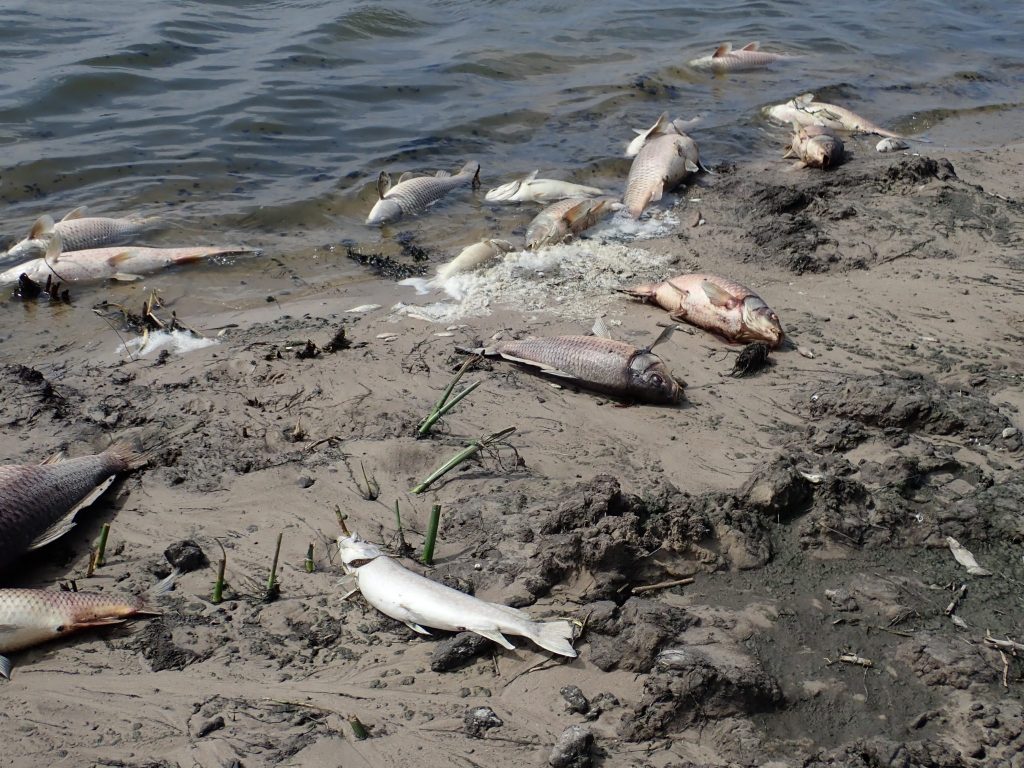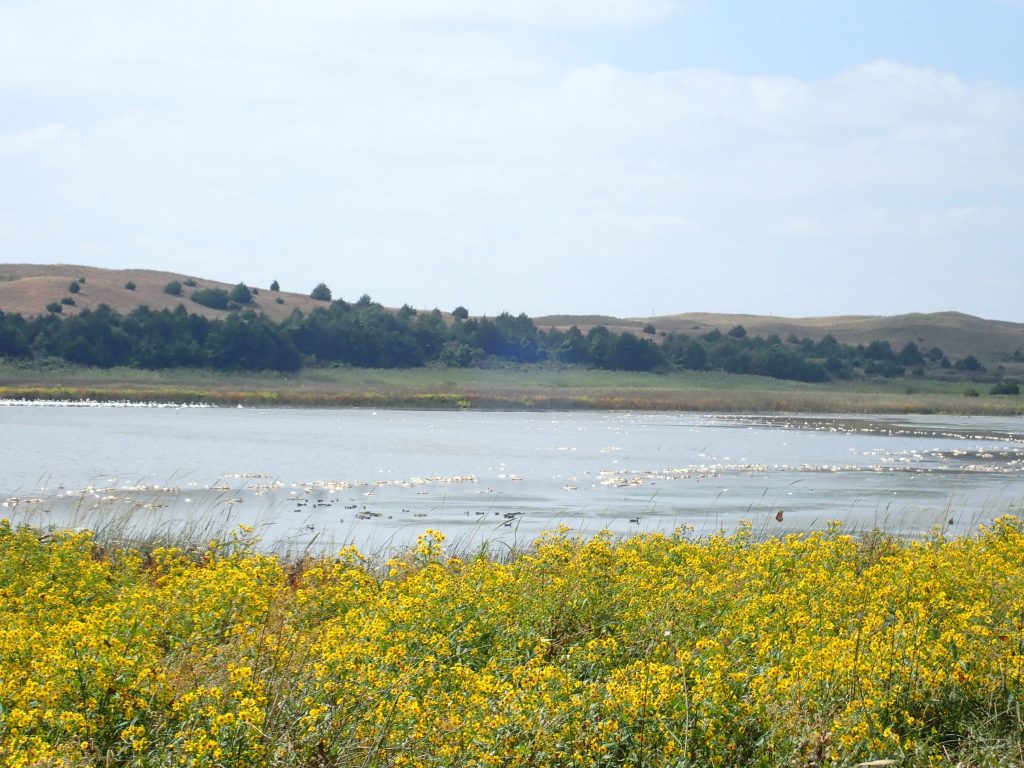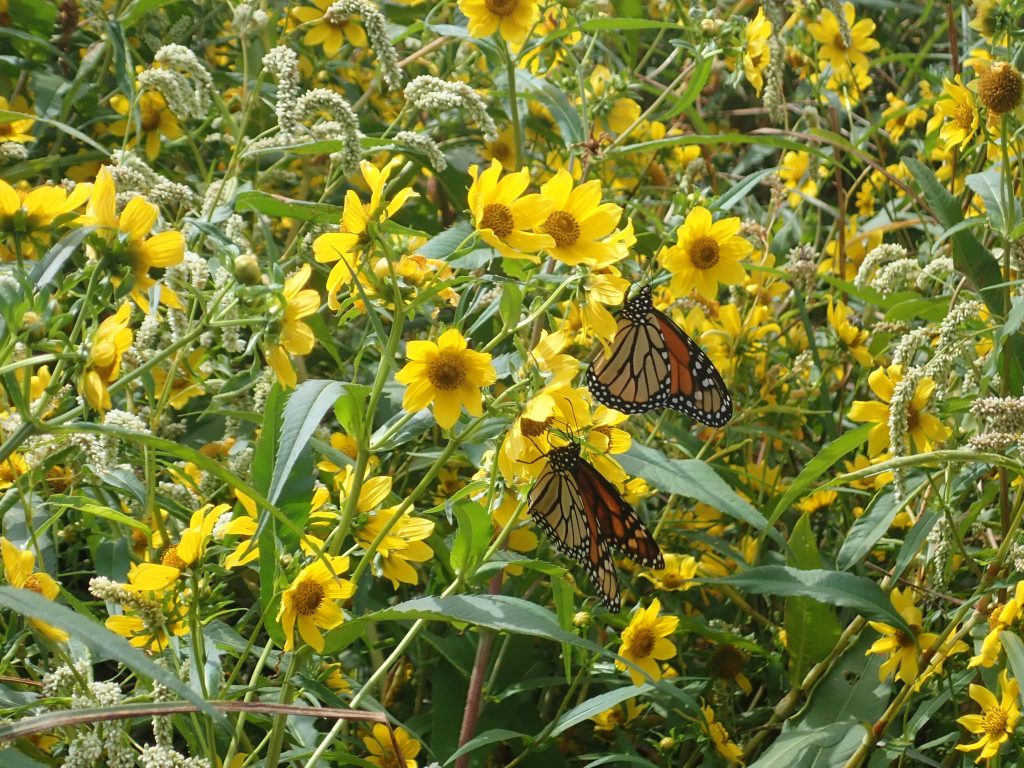I was outta the office a week or so ago to help do some field work. I got to help with some work on one of my favorite waters in one of my favorite parts of the state–Pelican Lake on the Valentine National Wildlife Refuge (NWR).
I am not going to rehearse the details, or the merits, of the large Aquatic Habitat Rehabilitation project that is ongoing on the Valentine NWR. If you have been living under a soapweed and do not know about that yet, you can catch up on it here, Valentine National Wildlife Refuge (NWR) Update. What I will tell you about is the recent work that was done at Pelican, the rotenone renovation to eliminate common carp.
Likewise I am not going to go into details about rotenone and its vital use in fisheries management. If you want some more information on that, there is some great background information on rotenone in this old blog post, Lake Yankton Renovation .
Water levels at Pelican had been dropped through the summer; less water means less rotenone is needed for treatment, and less water means the treatment will be more effective. Water levels were dropped even further by pumping.

I would guess the water level on Pelican was at least 2-3 feet lower than what it usually was, and that meant there was a whole lot of lake that was only a couple of feet deep. Still there were several hundred acres that needed treated and this was a relatively big project, “all hands on deck”.
We had personnel from Nebraska Game & Parks Commission Wildlife, Law Enforcement, and Fisheries Divisions, and the U.S. Fish & Wildlife Service. Every one had a job to do, every one knew what it was, and we “Got-R-Done”. I have always been proud of how well all of our personnel works together!
Here was the plan.
With all the shallow water and vegetation, air-boats were necessary for applying rotenone EVERYWHERE.
Main lake was covered by several other boats pumping both powdered and liquid rotenone. Although more difficult to work with, powdered rotenone is less expensive so we used as much of that as possible.
Boats crisscrossed the lake.
Different species and sizes of fish have different sensitivities to rotenone. Small fish become distressed and start dying almost immediately. At Pelican there were thousands of small, young-of-the-year (YOY) fish that came to the surface right away. Yes, a lot of those fish were bluegills and largemouth bass, but especially down on the east end, a lot of them were YOY common carp.
I know a lot of you are wondering exactly what fish were sacrificed in doing this rotenone renovation. Fishing regulations at Pelican had been liberalized since last winter to allow anglers to take as many desirable fish as possible. In addition, there were some fish that were captured and moved to other waters before the renovation occurred.
Once dead fish started showing up, I saw a few nice-sized bluegills, a handful of big bluegills, some largemouth bass, most 15-18-inches long, a handful larger, and darned few yellow perch. Yes, there were some dead pike, almost all of them less than 20 inches long. I saw a handful of pike that maybe would have been 30 inches, and no pike at all any larger than that. Here are some pictures of dead fish that would have been typical of what washed up along the shoreline all around the lake.
It takes large, adult common carp a little longer to succumb to rotenone, but they could not hide.
The enormity of the common carp problem was evident later.



So just how many common carp were infesting Pelican Lake? Were they really a problem?
Some of the U.S. Fish & Wildlife Service staff did sample counts to estimate the number of adult common carp that were eliminated. Yes, that was a stinky job, but I am glad they did it! In sampling 2500 m of shoreline, they counted 3977 dead carp. All of those were adult carp, averaged about 12 pounds a piece; they did NOT count YOY fish. Using those samples they estimated that over 20,000 adult carp were killed in Pelican for a total biomass of over 240,000 pounds. That would have worked out to over 300 pounds of common carp per acre and was over 90% of the total biomass of fish present in the lake. Thanks Mel N. for those numbers and that ugly work.
It is always amazing the difference in water quality after rough fish are removed from a lake. The change can be seen within days, within hours. Pelican was not a mud hole nor “pea-green soup” from algae blooms, but within a day or two the water already looked cleaner. Oh, and the waterfowl noticed almost immediately. There were plenty of pelicans around the lake while the work was occurring, but I noticed a lot more wood ducks and teal a day or two later.

Another interesting side note was the number of Monarch butterflies in the area. Some of the trees would be loaded in the mornings, sunflowers would be alive with them in the afternoon.
Pelican Lake is a special place to me, I cannot tell you all the memories I have of fishing on that lake with my Gramps Roth, Dad, Uncle Ivan, cousins, niece, nephews, daughter, son, wife and many, many good friends. The last time a rotenone renovation was done there was years ago, but what great fishing and great memories that fisheries management activity has provided. In a few years the fishing at Pelican, and other lakes on the Valentine Refuge, will be back better than ever. I cannot wait and Lord willing, you will see it here on my blog!
The post Pelican Renovation appeared first on NEBRASKALand Magazine.
































